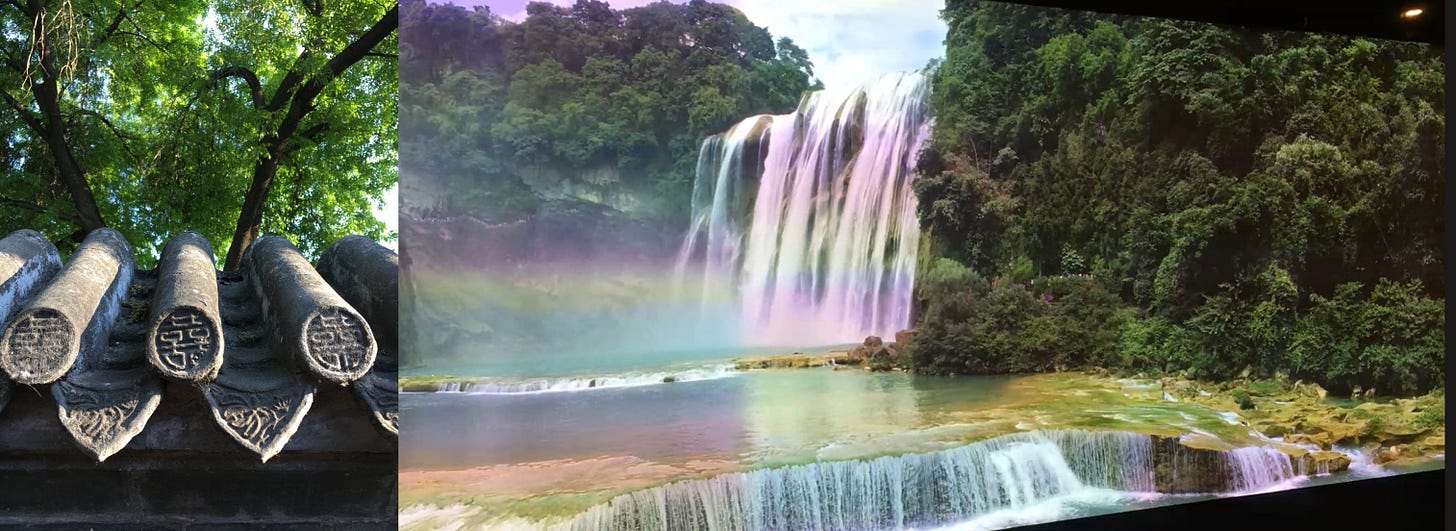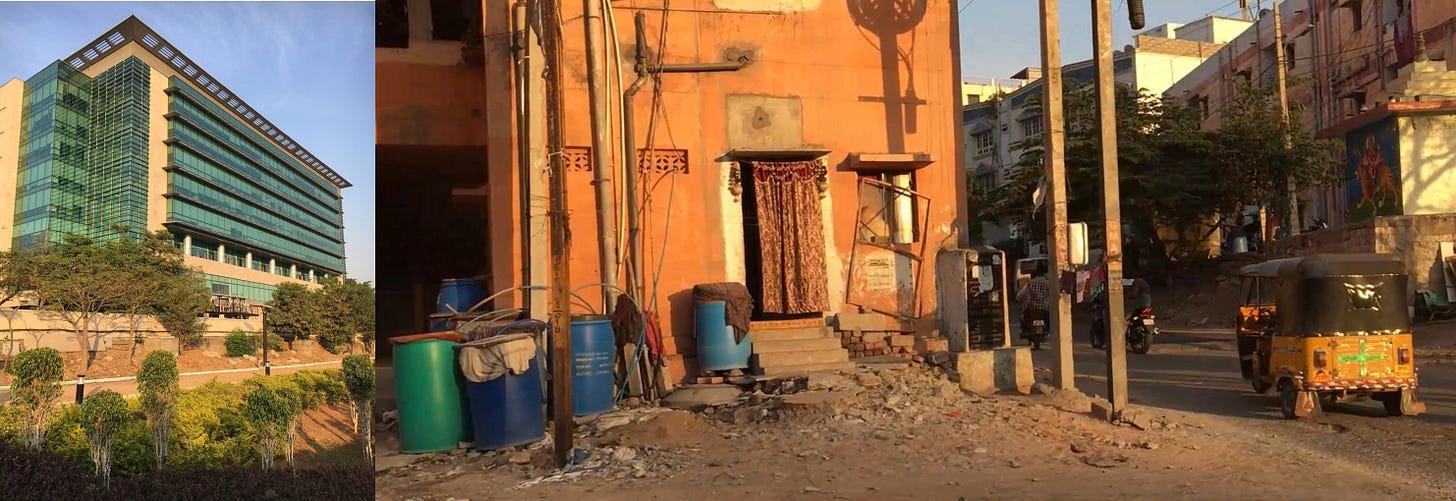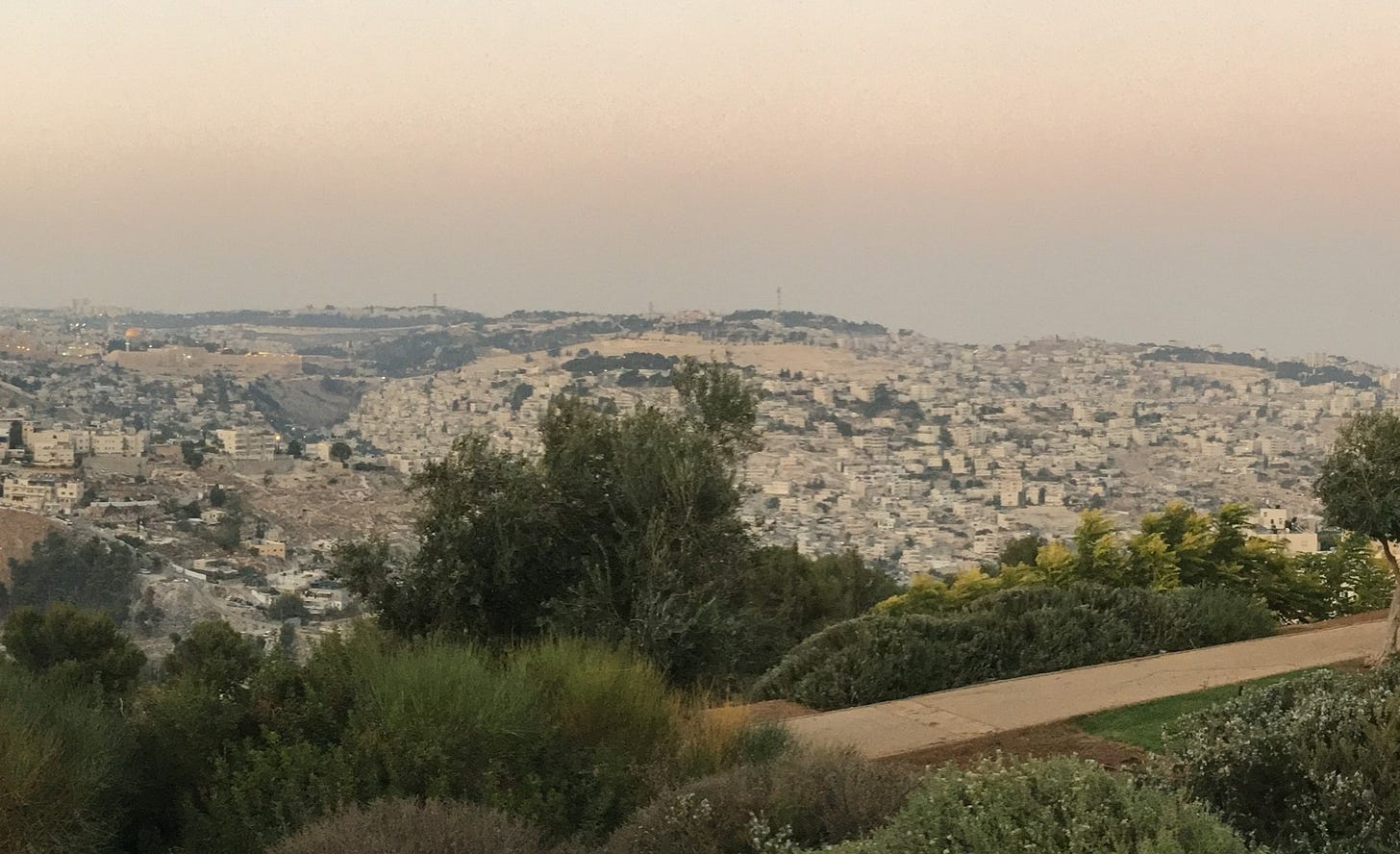Hello Interactors,
I was reminded that three years ago this week I was on a trip visiting remote Microsoft development centers overseas. Those trips afforded me the luxury of observing and understanding diverse geographies, societies, and economies. But it also drove home both the pleasure and pain imposing political and economic structures can bring.
As interactors, you’re special individuals self-selected to be a part of an evolutionary journey. You’re also members of an attentive community so I welcome your participation.
Please leave your comments below or email me directly.
Now let’s go…
FLY OVER AND DIVE IN
It was the model concentration camp. Shaped in an equilateral triangle made of 10 foot high stone walls painted white, it featured machine guns mounted high at the corners; fixed on the lowly prisoners. The sidewalk leading to the entry is pleasant and tree-lined; an attractive and seemingly innocent approach to a place that is anything but. It stirs a morbid twist of emotions. The perversity is punctuated by the words forged in iron bars on the entry gate: Arbeit Macht Frei – work makes you free.

To get to the Sachsenhausen concentration camp you disembark the train in a small nearby village and walk one mile to the entrance. The same path the prisoners would have taken. You pass by houses where whole families would come out to hurl rocks and spit on fellow humans; some were Jews, some homosexual, others with a mere limp, and occasionally even a relative.
That place reminded me of how easily a government can invent a structure motivated by domination and impose it on a region and it’s citizens. It demonstrates how a small group of people can create the necessary conditions for the production of labor, death, and destitution through extreme exploitation; a top-down political and economic structure masterfully and morbidly executed by masterminds who firmly believed there actions were for the good of humankind.
These camps bring us closer to the worst human suffering imaginable. But they also draw attention the to seemingly innocent complicit behavior lurking in the shadows. Hitler had regional aspirations for the structures he imposed that elicited reactions on a global scale. His actions also influenced individual behavior and shaped the culture of citizens and cities at a local level.
This site is short train ride north of Berlin. I was in town on business, so two of my colleagues and I decided to visit before flying home. My job took me around the globe visiting remote Microsoft development centers. In a single trip, I once flew from Seattle to Ireland, on to Israel, then China, and back home to Seattle.

From Haifa to Hyderabad or Bangalore to Berlin, I’ve observed structural societal patterns from high in the sky that are shaped by a global economy, and I’ve also experienced emergent forms of adapted human and cultural behavior on the ground. A single short trip around the world can bring into focus how environments have been shaped by people over millennia – both natural and manufactured – and how in turn those environments have shaped the people.
Glancing out the window as I descended into these major cities I could spot the warm autumnal colored patchwork blocks of agricultural land stretching into the distance. They gave way to increasingly dense dendritic spars of cold concrete roads slicing through clusters of steel buildings dotted with piercing lights as ant-like traffic pulsed its way though the tangled bustle.

I imagine these monstrous metropolis’s rising out of ancient embryonic farming, fishing, or mining settlements reminiscent of the neighboring landscape; a form of economic development termed, environmental determinism. Indeed that is true for many cities and towns, big and small, around the world, but in the last two hundred years a new ‘ism’ has been determining the development environment more than natural resources – capitalism. It’s led to uneven and inequitable development and settlement.
For example, while Indonesia’s 17,000 islands is home to some of the world’s richest resources, their per capita income is under $4,000 per year. Meanwhile, the tiny island city-state of Singapore, a place with few natural resources at all, has a per capita income of over $100,000 per year.
Many are quick to assume Singapore advanced it’s economy because it modeled itself after the West. Some regions did do this voluntarily, but it was also a common justification in the 1950s and 1960s for Western powers to swoop in to ‘improve’ so-called “Third World” countries. Powerful rich Western nations would introduce, often forcefully, Western democracy and then hand over economic development of resources and industry to private firms.
Indonesia was one such experiment. It’s now not only one of the poorest countries in Southeast Asia and Oceana, but their dense forests continue to be converted to agricultural fields by outside firms making it the sixth largest emitter of greenhouse gases in the world. And just last year, their government passed deregulation laws that provide incentives for the coal industry to build dozens of power plants. Imposing Western style capitalism is destroying both their environment and their livelihood.
Global institutions like the International Monetary Fund (IMF), the World Bank, and the World Trade Organization all pull from this play book. They seek poor and underdeveloped regions of the world and seduce, or coerce, them into believing that the way to the promise land is through both Western style democracy and industrial production. They then encourage mass consumption. The Global Plastics Action Partnership writes1,
“Seventy percent of [Indonesia’s] plastic waste, an estimated 4.8 million tons per year, is considered mismanaged in ways such as being openly burned, irresponsibly dumped, or left to leak into oceans and waterways…the flow of plastic waste into Indonesia's oceans is projected to increase by 30% to around 800,000 tonnes by 2025.”

AN ADDICT GETS THEIR FIX
Economic systems, in a very basic form, are ways of creating value and distributing it. The simplest economy could mean just putting food on the table. Some are more feudal-looking where value is created for a landlord. Others are communal economies where value is created among the group and then shared between members.
Capitalism, the dominant system in the world today, creates value through waged labor and the private ownership of assets, like accumulated wealth and property. All it takes is a small group of people, capitalists, to own the assets needed to produce the value. They buy labor from people in exchange for the production of that value. Both the labor and the outputted value are bought and sold through a market system.
With wealth accumulation as a primary motivator, capitalist economic systems are engineered to grow profits. If growth lags, profits decline and competitors swoop in to recruit labor and buy cheapened assets. Capitalists are therefore incented to continually seek new means of gaining profit.
Profit comes from the value created by labor beyond which they are paid. For example, if I pay an employee $10 an hour, and it takes them an hour to produce value, if I sell that value on the market for $10 I am breaking even; no profit. If I sell the value for $15, I make a $5 profit.
But if the market demands the value to be sold at $10 (for example a competitor is selling the same value at $10) then a capitalist is incented to find a labor pool willing to create value for $5 an hour or less.
If $5 an hour is not enough of a wage for a worker to buy clothes, food, put a roof over their head, or raise a family – and is not empowered to demand a higher wage – capitalists seek labor pools in regions where they can. And raising a family is also important to a capitalist because the kids are potential future labor.
This idea of extracting more value out of labor than what a capitalist is willing to pay is called exploitation. Because capitalists own the assets or the means necessary to create the value – be it land, machines, material, facilities, software, or intellectual property – they hold power. Capitalists are motivated to accumulate wealth because wealth offers the ability to own assets and property. And with ownership, comes the power to exploit labor.
Social classes sort along these divisions in capitalist societies. Capitalists own the assets that create value and they buy labor from the working class. This simplistic description may conjure up images of slaves or migrant workers hunched over in fields with their shoulders being pulled by the weight of their yield as the sun presses down on their backs, or child labor in the dangerous steel factories of the industrial age, or overworked Asian women tediously assembling mobile devices in China.
But corporations seek to exploit white collar workers too. There’s a reason I was flying to remote parts of the world for Microsoft. There are software developers in the world willing to do the same work as American engineers for less pay. China and India were the first, but as labor prices climb in those regions software companies quickly go on the hunt for the next set of skilled labor to exploit, like Africa.
Geographer David Harvey termed this hunt for lands of cheaper labor a spatial fix. The concept was first related to a problem of overproduction of goods. Imagine a small town where the workers are producing more goods than they can buy. The surplus of goods begin to pile up creating a problem of overaccumulation. Capitalists then seek to expand to another territory to sell and produce value while fixing the problem of slowed growth, hence the term spatial fix.
This reveals the paradox of Capitalism. As soon as a region is established to produce value from labor, it starts a clock of degradation. Take Detroit, for example. As soon as Henry Ford started buying local labor to produce value for consumers using property and assets he owned, the countdown clock to the region’s demise began.

Evidence of spatial fixes that then decline exist wherever colonialism is found: Manufacturing clusters of the Northeast United States, the rust belt in the Midwest, textiles in North Carolina, metal working factories of Connecticut, mining towns in the West, agricultural clusters across the country. Japan has theirs, so does Germany. And now, the most grand example of wealth accumulation in history – China.
China’s Pearl River Delta (PRD) was rural just 40 years ago, much like the Detroit area would have been when Henry Ford showed up. But2,
“The PRD now hosts nine major mainland cities in addition to the special administrative zones of Hong Kong and Macau. Two of those cities – Guangzhou and Shenzhen – are both home to over 10 million people. With more than 66 million residents in 2017 in total, the PRD has been designated by the World Bank as the world’s largest megacity, rivalling France and the United Kingdom in population terms. Its gross domestic product (GDP) of over $1.2 trillion puts it on a par with Russia, Australia, or Spain, and exceeds that of Indonesia, which has four times the population. In terms of trade levels, the region is only exceeded by the United States and Germany. The region attracts one‐fifth of China’s inward foreign direct investment (totaling over $1 trillion since 1980), and accounts for over 10 per cent of its GDP and 25 per cent of its exports. All this in a region that accounts for less than 1 per cent of China’s land area and 5 per cent of its population.”
ABSOLVE, RESOLVE, AND EVOLVE
But a spatial fix is mounting in the PRD too. Fewer Chinese are migrating to the area and the cost of labor is rising, so firms are starting to relocate elsewhere in China and Southeast Asia. Thus begins the decline of the PRD.
Companies also seek other ways to grow profits, such as technology innovations. Japan’s foray into robotic assembly lines in the 1970s and 1980s is the perfect example. Microsoft, Amazon, and Google are constantly finding ways to improve efficiencies in server farms around the globe through innovations in software and hardware – and cheap labor.
But these efficiencies can result in a surplus of labor. And if people are out of work or their wages are held too low, the demand for products starts to decrease. As container ships continue to backup at ports around the world, you can imagine how over-accumulation can become a crisis for capitalism. Or recall during the early outbreak of Covid when dairy farmers had to poor milk down the drain and livestock famers were forced to slaughter hundreds of animals when demand for those products plummeted.
There’s a tendency for economists, capitalists, and spin doctors to portray a spatial fix as a good thing. It’s growth, after all, and remember from last week’s post – up means good. But you can see the tension and instability capitalism can introduce. Pay workers too much and you lose profit. Work them too hard and they’ll quit. Pay them too little and they can’t afford housing, goods, and services – or property. Companies then produce more than they can sell, machines and workers go idle and there goes hope of further growth.
Capitalism is inherently volatile and prone to instability and rife with tension and contraction. Labor wars, unemployment see-saws, too much inventory or too little, prices are increased or slashed. I live in a city with more wealth than some nations, while more homeless tents pop up everyday.
We’re led to believe these crisis of instability are temporary. Everyday we’re fed statistics on GDP, earnings reports, employment rates, and an alphabet soup of climbing or falling stock symbols. We’re told that disruptions to any of these are the result of outside forces: viruses, weather, logistics, war, social unrest, power outages, or that servers have been hacked. Something else must be wrong, because we’ve been led to believe the economic system we have is for the good of humankind. Capitalism has been good for some humans, and it isn’t always kind. It’s time to adjust and evolve.
The families now living in those homes in Germany outside of Sachsenhausen did not hurl rocks at us. They adapted to new cultural norms, moved on, or died out after liberation. The camp itself morphed into a prison for Nazi war crime criminals, and then it became a museum. The town went from the destination of Hitler’s elite visiting the model camp, to a town for tourists seeking understanding and solemn, sobering solace.
As fascism and Nazi power came to this village, before Sachsenhausen was built, self-interested elites collaborated and colluded in the process. They rounded up their political enemies and intellectuals challenging the movement and forced them into labor. Their properties and assets were possessed by the government or colluding private entities. It was for the good of humankind, they argued.
This is what Western governments and capitalists do when they find a new region to exploit. They seek self-interested parties with which to collaborate and collude. Those who resist are jailed, silenced, displaced, or killed. The devalued property and assets are then bought in an act of accumulation through dispossession and the locals sell them their labor for whatever price they demand. And it’s done for the good of humankind, they argue. Work will make your free.
But like concentration camps, long after the choreographed chaotic and volatile exploitation, disruption, death, and destruction of people and land, cities and regions heal. They transform and evolve through new and novel interactions between people and place. Their history, no matter how awful it may be, becomes a catalyst for a new trajectory; what evolutionary economists call path dependence.
Soaring over cities and diving into their current and past histories reveals capitalism’s influence on the shape and form of their urban tissue at different scales. Flying into Beijing you see high-rises towering next to rice fields. On the ground, one minute you’re walking in Ancient China, and the next you’re transported to the future. You see the powerless and penniless on one corner and powerful and prestigious on the other.

Up against the fence surrounding the Microsoft building in Hyderabad – that looks like it belongs in Redmond – you see cardboard homes and mud and garbage running through their belongings.

Jerusalem is split down the middle with one side lush and green with new, stylish Western style architecture and the other in near ruin with crumbling, dilapidated homes.
I saw evidence of effects of dominant and imposing structural governmental and capitalistic priorities playing out at a global scale down to the local level. But, in the ashes of the dying and the unwanted I also witnessed the genesis of societal transformation through the interactions of people and place.
The unbridled structures of global capitalism may have dominated, exploited, and devastated vulnerable people and places for the last 200 to 500 years, but I sense a need for a fix – a liberation from this well-meaning but dangerous and destructive economic tyrant.
Economic Geography: A Contemporary Introduction, 3rd Edition. Neil M. Coe, Philip F. Kelly, Henry W. C. Yeung.













